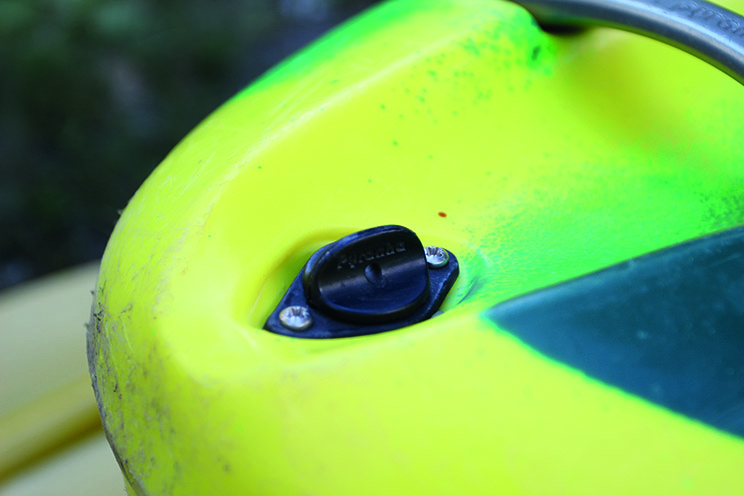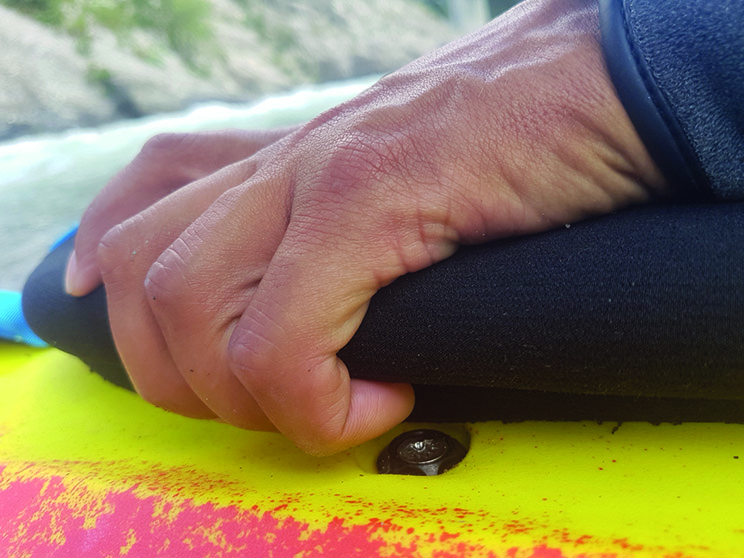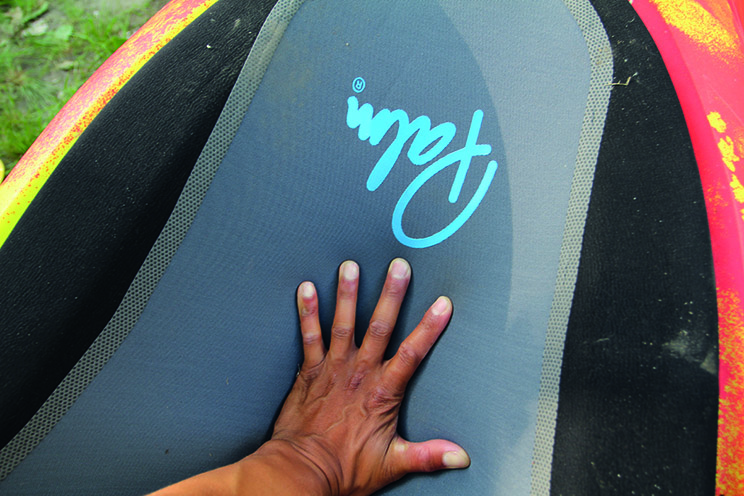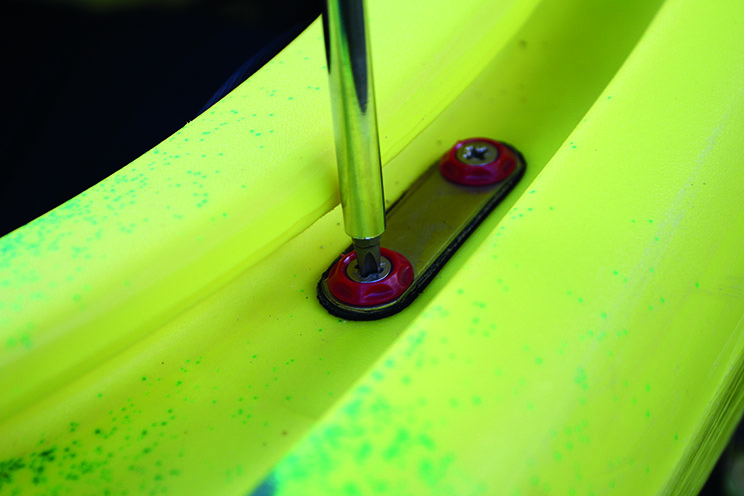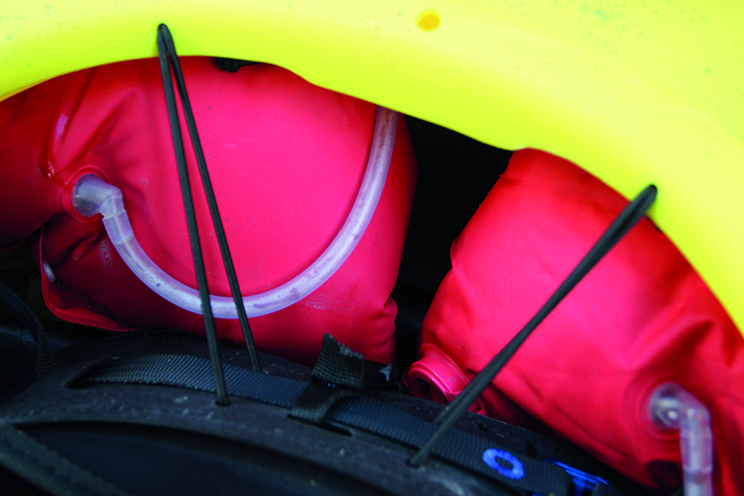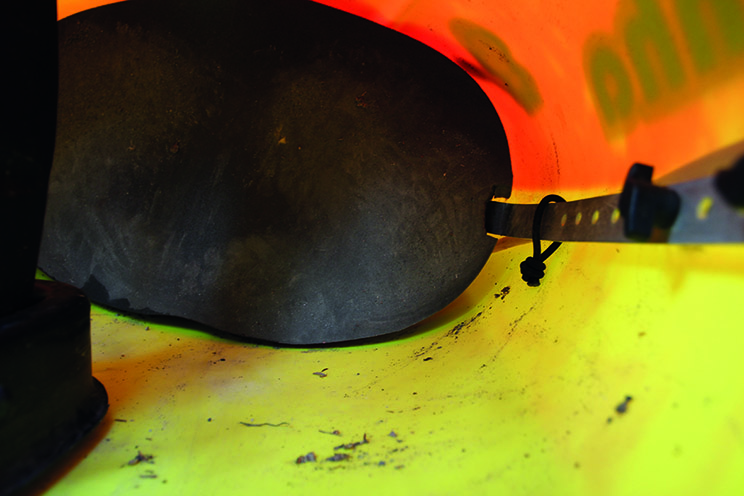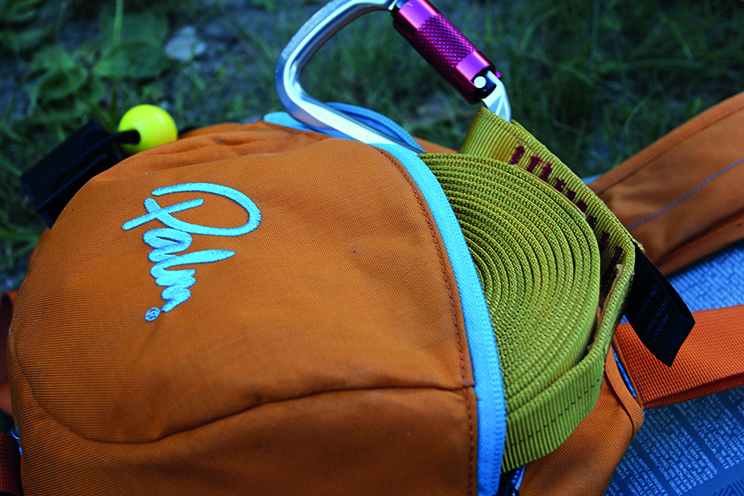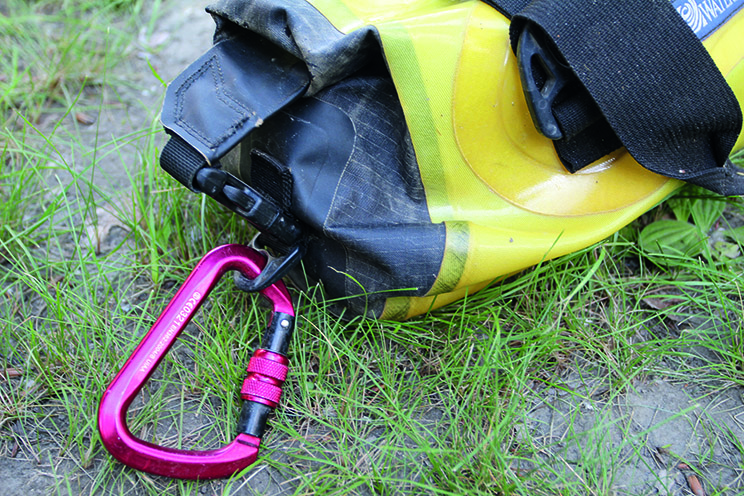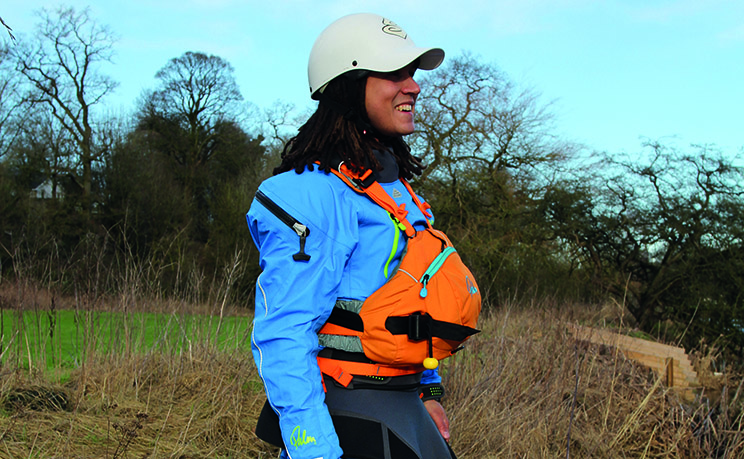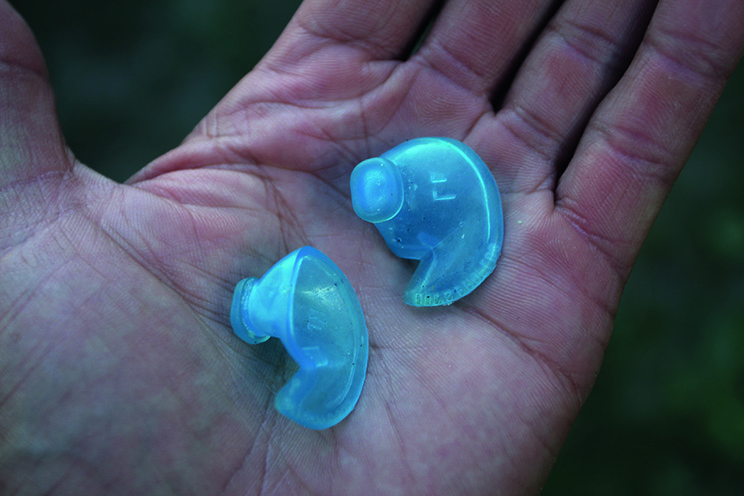Products You May Like
You can view all the past articles on the links below. Chris has now also brought out his updated new Safety and Rescue Essentials manual that can be downloaded or purchased from www.chrisbraincoaching.com
No.1: Safety series: be prepared and stay safe:
https://thepaddlermag.com/be-prepared-and-stay-safe/
No.2: working as a team on the water:
https://thepaddlermag.com/safety-series-no-2-working-as-a-team-on-the-water/
No.3: swim, chase, throw:
https://thepaddlermag.com/chris-brain-coaching-swim-chase-throw/
No. 4: get the advantage
https://thepaddlermag.com/chris-brain-safety-series-no-4-get-the-advantage
No. 5: What if…
https://thepaddlermag.com/chris-brain-safety-series-no-5-what-if-2
No. 6: the chest harness
https://thepaddlermag.com/chest-harness/
No.7… shouting, reaching and wading
https://thepaddlermag.com/chris-brain-safety-series-no-7-shouting-reaching-and-wading/
In the eighth part of the paddler safety series we have some top tips to help to keep you safe on the water. Some of these might seem like common sense, but can often be overlooked by paddlers.
It is important to remember that there is no substitute for professional training in this area and this must be combined with experience to effectively use the ideas and techniques contained in this series. This article is not intended to replace formal training.
Our previous articles have focused on preparation, simple rescues, working together on the river and above all avoiding incidents happening in the first place. The topics covered in this article assume that you have read the previous chapters.
Stay hydrated, be well fed, keep topped up on energy and wear suncream
Our priority when we are on the water should be keeping ourselves safe, this means that a little bit of personal care will go a long way towards looking after ourselves. If we are not well hydrated we can see a sharp decline in physical and mental performance and if we think about how critical our decision making is in this challenging environment, then a dehydrated paddler can quickly make simple mistakes. To perform your best, make sure you have been eating well before you paddle, but also keep topped up by carrying some food or snacks with you while you are on the water. I like to keep an energy bar in my PFD, as it is easy to eat in the eddy rather than getting out of my boat to get it out of my drybag.
In many locations that we choose to paddle in we are also at risk from the sun’s harmful rays. Many paddlers put suncream on before they paddle, but only a few seem to keep adding more to their skin as the day progresses. I like to keep a sunstick or mini bottle of suncream with me when the sun is shining so that I can reapply my suncream throughout the day.
Rub sand on hands and paddle shaft to get rid of suncream
Of course, using suncream is important, but the issue we have as paddlers is that when we get it on our hands it can make our paddles feel very slippery and we don’t want to lose our grip mid rapid! Once you’ve applied your suncream grab a handful of sand or grit from the river and rub it around the palm of your hands and they will be back to normal in no time. If my paddle shaft still feels slippery I sometimes do the same with my paddle shaft too.
Check your bung
It’s not uncommon to see paddlers on the water without their drainbung done up. This could easily lead to a boat full of water, or even swim if you are paddling through a big rapid. Before you set off from the bank, turn around and have a quick check to make sure your bung is done up.
Check deck
For kayakers, our spraydeck is part of our safety gear, if our deck comes off at the wrong time then it could potentially be very dangerous. Take an extra moment to check all around your deck before you push off. Remember to squeeze the rand/bungee right into the cockpit rim to give the best seal and to help make sure it won’t come off if it gets loaded with water.
Is your deck implosion proof?
Finding a spraydeck to match your kayak might not be as simple as it sounds, it needs to be the right size, grip the cockpit rim well and shouldn’t come off if it takes a large amount of pressure from the water. For paddlers with a bit less experience, having a deck that is easy to get off might be reassuring, but if you are on more serious water a spraydeck coming off mid rapid could lead to a swim. When you are buying your spraydeck make sure you test out the fit on your boat first. Push down on the centre of the deck with your hand/foot to make sure that it won’t come off, if it starts to peel off at the sides when you push down, it isn’t a good fit. As a general rule rand decks are more implosion proof but bungee decks can be easier to get on and are generally a little bit dryer. Regardless of what you choose, the fit is most important.
Keep your throwbag close to hand
The last few times that I have had to throw my throwbag haven’t been in a pre-planned bank based safety rescue, but in a situation where I had to jump out of my boat and get my line out quickly. If you were called into action, how fast would you be able to get to your rope? When I’m paddling my kayak, I like to keep my bag right in front of me so that once I’ve popped my deck it’s the first thing I can grab.
Check the fittings in your boat regularly
We put our canoes, kayaks and other paddling craft through some serious stress. Big landings, hitting rocks and even the vibrations from having a boat on a vehicle can lead to internal fittings working loose. Take a few minutes periodically to give your boat a little tune up and to make sure that everything in your boat is as it should be and that all the bolts are tight. I have personally been half way down a rapid when my seat decided to become detached from the side of the boat! Let’s just say that the experience wasn’t very pleasant and could have easily been avoided with a bit of maintenance and TLC.
Use airbags!
Airbags will make your boat easier to rescue, less likely to get pinned and will help reduce damage when it is floating downstream as it will be floating higher in the water rather than getting submerged in whitewater. Most modern creek boats have room in front of the footrest for a pair of smaller bow airbags. Topping these up with air can be a challenge if you put the pipe behind the footrest so consider routing it down the side of your footrest adjustment bar with either a bit of bungee or zip ties.
Use a footblock
Make sure that you stick some foam onto your footrest in the front of your boat. Virtually all boats will either come with some foam glued in or will supply it so you can custom fit it to your boat. This footblock will serve as a shock absorber if you impact on a rock, but also helps to ensure that your feet can’t go behind the footrest, so make sure that it fills all of the space and doesn’t have any gaps for your feet to slide past
Never be apart from your keys and phone
This one is pretty simple, if I have my phone I can call for help and if I have my keys I can drive my vehicle. I know several paddlers who have had mishaps with keys floating away from them in their boats downstream because they store them in their kayak/canoe. Get a decent waterproof pouch and keep them on you, either tied into your cag/PFD, in a pocket (or around your neck) underneath your cag/drysuit.
Be ready with your sling
Your sling/tape is one of the bits of kit that you might need to get out in a hurry. Keep it nice and neat by storing it coiled and ready with a karabiner already attached. If you coil it, it will also mean that should you wish to throw the end to someone to either grab or clip that it will deploy very easily too.
Use good shoes
Think about all the jobs that you might need your shoes to do….paddling, swimming, running, climbing, even driving. Most of the time we are also walking over wet rock, muddy banking and on uneven terrain, this means that we should choose footwear that is up to the task. Try and choose a shoe with a good grippy sole, decent foot protection and support and ultimately something that you can actually fit in your boat and paddle in. Many paddlers choose to wear approach shoes or fell running shoes as they often meet all of the requirements that we need on the water. Remember our footwear is part of our safety kit, little wetsuit pumps won’t cut it when you are portaging round a rapid on tricky uneven ground.
Upgrade your knife
Any paddler who carries a rope should be carrying a knife. Make sure that your knife is rust free and opens easily, a bit of WD40 or lube will help it last much longer than if it stays wet in your PFD all the time. On many knives, you can add an extra bit of tape to the thumb hole which can act as a bite tab to help open it should you have cold hands. You can also add a piece of cord at the end to make it easier to get out of your PFD in a hurry, simply reach for the cord and pull it out.
Attach bags with proper karabiners
If you are carrying kit in drybags in your boat, attach them with the same type of karabiners that you are carrying in your PFD. If you attach your bags with accessory type karabiners or a karabiner that you wouldn’t want to use in a rescue then it will be no use to you should you come to need it in an emergency.
Dress for a rescue
Are you dressed to be rescue ready? What would happen if you had to stand in cold water to help a paddler who was stuck in a kayak/canoe for a prolonged period of time? Are you ready to potentially take a swim? Even in a hot climate the water temperature can be very cold, in particular if we are paddling rivers that come from snow melt.
Wear earplugs
Anyone who paddles is at huge risk of “surfers ear” and we can reduce the risk of developing long term hearing loss by using earplugs. Earplugs quite literally come in all shapes and sizes and it is very easy to have them custom made too, it shouldn’t be too hard to find something that is comfy and won’t fall out if you go underwater. Remember “surfers ear” isn’t to do with your age, it’s about the amount of time that you spend in/under the water, if you are on the water regularly.
Acknowledgements
Chris Brain
Chris has been kayaking, canoeing and coaching for the last 15 years and runs his own business Chris Brain Coaching, delivering paddlesport coaching, safety and rescue courses and REC First Aid Training. http://www.chrisbraincoaching.com. Email: chris@chrisbraincoaching.com
Chris would like to thank Pyranha Kayaks, Palm Equipment, VE Paddles and Go Kayaking for making fantastic kit and their continued support. Photo: Patrick Beavis




